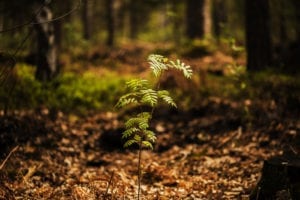Trees are inherently designed to grow the next generation in a forest ecology. The wisdom embedded in this design offers fruits of insight for leadership. One of the design principles is that slower growth in a tree’s youth is a prerequisite for the tree to have a longer life. Based on this assumption, the forest ecology creates conditions for the seed to germinate and restricts the flow of resources to force a slow growth. To connect that process to leadership, one must first understand how the principle affects a tree’s entire life cycle.
Nature’s example of adaptation
The tree canopy only allows three percent of sunlight to reach the next generation of growth. This helps a young tree to survive and constricts the speed of growth. It also causes a young tree to be no thicker than a pencil and no taller than a person. Thus, the tree is more adaptable and bends in the wind without breaking. The constriction of growth also fortifies the trunk, making it dense, resistant to disease and able to close wounds with bark before any decay occurs. The young trees are also given nutrients through the mycelium (fungi) and the roots of the “mother” tree during this early growth phase to compensate for the lack of sunlight.
At some point, a large tree gets damaged from weather, or just grows old and vulnerable to wind shear. The canopy opens when the tree eventually falls. Consequently, the next generation of trees are given an increased ability to photosynthesize, grow thicker trunks and become taller. It takes about 20 years for the higher canopy to grow back together. At that point, these mid-sized trees once again slow their growth to accommodate for the reduced amount of sunlight they receive. This pattern continues to repeat itself until the next generation of trees become the canopy in the forest. In turn, they spread their seeds to grow the next generation.
Tree growth and fast-tracking talent
Leadership transitions in human organizations often operate on different principles of recognizing and growing the next generation of leadership. We tend to assume that some staff members have more talent than others and that our job is to fast-track these individuals into leadership positions. In some cases, this works well. But in others, it doesn’t provide candidates the time necessary to absorb knowledge and wisdom that will develop them into great leaders. This is why talented, young leaders are often unprepared for premature promotion. Their inner cores are not yet strong enough to hold the center of the organization and lead into the future. Young trees, however, spend time living in the context of their ecosystem and in relationship with the nutrients of older trees in the forest. The slower growth anchors them in the soil and provides a stronger base of tightly woven cells that make their inner core strong and resilient. Trees teach us an invaluable lesson that to go fast doesn’t necessarily mean that we also go far.






